#mobile marketing billboard
Text

Finding Outdoor Advertising: The Changing Trend in Billboards
Something interesting is going on in the field of advertising outside of our phones and displays. Outdoor advertising includes more than simply the large signs you see by the side of the road. These days, moving billboards are altering the way that companies communicate with their customers.
What Makes Moving Billboards Unique?
Mobile billboards resemble large posters that are mobile. They move around, unlike traditional signage. Rather, they go around and make daily appearances at various locations. This implies that they can converse with a wide range of individuals in various neighborhoods.
Why They're Awesome:
Picture yourself driving past a large sign when a truck with a massive, vibrant advertisement on it pulls by. Hard to miss, isn't it? The allure of moving billboards lies in that. Their constant motion draws your attention.
They're All Over:
Whether you're traveling through your neighborhood or parked outside a concert, you may notice moving billboards. They follow you about, akin to little advertisements.
Why Companies Like Them:
Moving billboards are a wise investment for companies. They are less expensive than TV commercials and other forms of advertising. Additionally, they can reach a large audience, which aids in promoting a company or product.
Maintaining Interest:
Consider what would happen if you saw the same billboard advertisement every day. Sounds dull, doesn't it? Ads on moving billboards may be quickly changed, so you're always seeing something fresh.
They Belong in the Digital World:
Moving billboards can exist in the digital world despite being large, tangible structures. Occasionally, they have screens with moving images or text. This enhances their coolness.
They're Creative:
Advertisers may employ moving billboards in a really inventive way because of their size. They might draw attention with eye-catching phrases, humorous images, or vivid colors.
Embrace the Fun:
Interested in a fresh perspective on ads? The next time you're out, look for moving billboards. They're an entertaining way for companies to interact with the public, and you never know, you might see one that makes you grin.
Moving billboards are having a significant impact when we consider how they're affecting major cities like Charlotte, North Carolina, Washington, DC, New York, Los Angeles, Miami, and Florida. They draw attention and blend in perfectly with the hectic city life.
In summary, one street at a time, moving billboards are revolutionizing advertising. Everywhere you look, they're imaginative, vibrant, and present. Thus, the next time you see one, stop and consider how awesome it is.
0 notes
Text
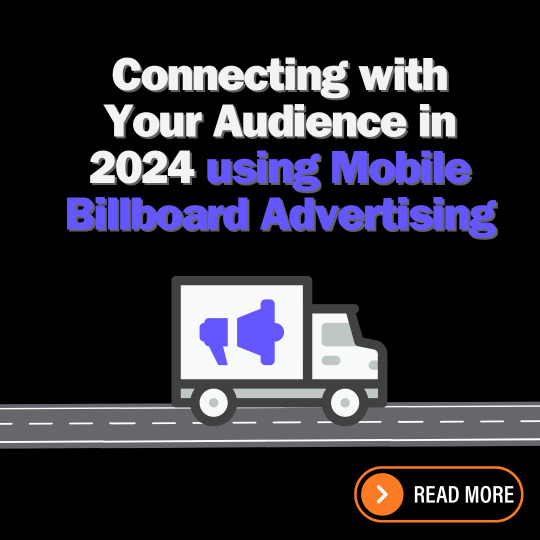
Connecting with Your Audience in 2024 using Mobile Billboard advertising
Hey there! Ever wonder how businesses manage to catch your eye while you're out and about?
Well, one way they do it is through mobile billboard advertising. In this blog post, we'll chat about what exactly mobile billboard advertising is, why it's so darn important, and how businesses can use it to reach folks in bustling cities like Los Angeles, New York, Chicago, Washington DC, Miami, Florida, Charlotte, North Carolina, and throughout California.
1. What's the Deal with Mobile Billboard Advertising?
Picture this: big signs plastered on trucks or vans cruising around town. These signs shout out a business's message, deals, or products. They're pretty hard to miss, right? That's mobile billboard advertising in action!
2. Why Should We Care About Mobile Billboard Advertising?
Think about it. We're bombarded with ads online and on TV all day long. But mobile billboards? They're different. They're right there in front of us as we go about our day in cities. Whether we're strolling down the street or stuck in traffic, those moving trucks make sure we can't miss their ads. That's what makes mobile billboard advertising so effective!
3. Where Can Businesses Use Mobile Billboards?
Anywhere and everywhere, really! These mobile billboards can hit up busy city streets, roll up to big events like festivals, or even cruise through neighborhoods where lots of people live. They're super flexible and can go wherever businesses want them to, making sure the right people see the ads.
4. Who Can Benefit from Mobile Billboard Advertising?
Whether it's a large corporation or your local mom-and-pop store, mobile billboards may help them spread their message. Mobile billboards can be used by political campaigns, non-profit organizations, and event planners to advertise their activities.
5. When's the Best Time to Advertise on Mobile Billboards?
Whenever there's a crowd! When everyone is moving at rush hour or during major occasions like holidays and festivals. Additionally, businesses can utilize them to spread the word about a new product launch or special deal.
6. How Can Businesses Get in on the Mobile Billboard Action?
Simple! They can collaborate with businesses that are experts in this form of promotion. These people can assist with anything from creating the advertisements to organizing the truck routes. Businesses may ensure that the correct people see their ads at the right moment by utilizing their expertise.
In summary:
There you have it, then! In 2024, mobile billboard advertising will be revolutionary for companies trying to reach their target audience. Businesses can ensure that a large number of people see their advertisements by attaching visually striking signage to trucks that go about the community. Mobile billboards are a useful tool for businesses, big or small, to contact their target audience and pique their interest in what they have to offer.
0 notes
Text

Discovering the Potential of Outdoor Advertising
It can be difficult to come up with creative ways to communicate our messages in a time when ads are all around us. An increasingly popular tactic is mobile billboard advertising. Let's explore its definition, importance, and use in social interactions.
1. Recognizing Mobile Advertising
It's likely that you have driven through city streets and seen those eye-catching signs atop trucks or trailers. These portable canvases, or mobile billboards, convey a range of messages from companies, associations, or occasions. They are difficult to miss due to their imposing presence, which leaves a lasting impression wherever they go.
2. What Sets Apart Mobile Billboards?
When was the last time you gave an online advertisement your whole attention? The deluge of digital content causes advertisements to get buried in the mix. Conversely, mobile billboards provide a welcome change of pace. They grab your attention viscerally whether you're in traffic or just strolling down the street. It's a simple but efficient way to spread awareness without violating people's online privacy.
3. Where Are Mobile Billboards Located? The fact that mobile billboards are portable is one of their greatest features. These mobile billboards may be seen anywhere, from busy metropolitan streets to more sedate suburban areas. They roam wherever there are people to see them, much like nomadic people of today. Utilizing technology, they can even focus on particular regions, guaranteeing that the appropriate message reaches the intended audience. Mobile billboards can appear wherever in sunny Florida or California, whether you're in the bustling metropolis of New York, the vibrant streets of Los Angeles, the windy city of Chicago, the political hub of Washington, DC, the diverse neighborhoods of Charlotte, North Carolina, the sunny beaches of Miami, or anywhere else in the United States.
4. Whom Can Mobile Billboards Help? Anyone can utilize mobile billboards, which is their greatest feature. Mobile billboards provide a means of getting your message seen, whether you're a neighborhood organization raising awareness of a significant issue or a small business looking to enlist local support. They're not just for large organizations with large expenditures; they're for everybody who wishes to meaningfully engage with others.
5. What Time Is Best for Getting on the Road? When it comes to mobile billboard advertising, timing is crucial. When people are most likely to pay attention, that is, at rush hour, at a community event, or when there is a buzz about something new, is when you want to grab their attention. You may make sure that the individuals who matter most hear your message by selecting the appropriate time and location.
6. How Would You Begin? Are you prepared to go with your message? It isn't as difficult as you may imagine. You can get assistance from businesses that specialize in mobile billboard advertising at every stage of the process. Together, you'll come up with catchy designs, map out your path, and make sure as many people as possible notice your message. It's an easy and efficient technique to have a significant effect.
In conclusion, the main goal of mobile billboard advertising is to reach consumers when they're out and about. You may break through the noise and leave a lasting impact on people around you by putting your message out there in a practical and memorable way. Why then wait? Now get on the road and start distributing the word!
0 notes
Text
Catching Eyes: How Mobile Billboards Are Changing Advertising
Ever wondered how brands capture the attention of audiences wherever they are? There's a little secret, and it's all about these mobile trucks that move around the city. These trucks offer another type of out-of-home advertising, giving businesses a new way to target potential customers.
These trucks are flexible and go where the action is. There are huge mobile billboards on the street targeting all hotspots. where people pass, that's how effective these mobile ads are. They are like chameleons, blending into any environment, making sure that only the right audience sees them.
Whether it's rush hour or a festival, these trucks make an impact and attract a lot of attention.Mobile billboards allow advertisers to plan and schedule when and where their ads appear. Advertisers can also closely monitor the effectiveness of their campaigns. From impressions to engagement levels, all the details are in place to help refine and maximize their strategy.
These mobile billboards appear in metropolitan areas such as Los Angeles, California, New York City, Miami, Florida, Charlotte, North Carolina, Washington DC, and Chicago. The best thing about these trucks is that they are cheap and don't cost an arm or a leg.
They don't have to worry about manufacturing or installation costs. Last but not least, these mobile billboards are not only big, but also bright and bold, which is hard to ignore when you see them. These types of ads are sure to leave a lasting impression. Impressive with attractive images, attractive animations, and some even have interactive elements.
Ultimately, mobile ads are a powerful modern form of advertising that offers flexibility, customization, cost-effectiveness and a lot of wow factor for your audience. Next time you're on a busy street, keep an eye out for these billboards, they might have something you want.
0 notes
Text

Ralph Lauren Takes His Line on the Road
By Stephanie Strom Sept. 23, 1993 (Originally published in the NYT)
While other retailers are taking their acts to television's home shopping networks, Ralph Lauren is taking his new line of jeans and rugged clothing on the road in an 18-wheeler.
A team of nine young salespeople yesterday started selling the designer's RRL, or Double RL collection out of a Peterbilt semitractor trailer truck parked on the campus of New York University in Manhattan. The trailer, painted with mustangs running across one side and pulled by a cherry red cab, plans to visit college campuses across the country cultivating customers who might otherwise miss the company's more traditional marketing efforts.
"It's a traveling billboard," Mr. Lauren, who looked as if he had just stepped out of one of the on-board dressing rooms in full RRL attire, said in a truckside interview at N.Y.U.
But it goes beyond that. The truck gives the designer, who is as much a savvy marketer as he is a fashion maven, and his retail empire reach beyond the fashion magazines and department store shops that feature RRL clothes. College students do not necessarily look to the ads in Esquire and Vogue for wardrobe ideas, Mr. Lauren reasons, or spend money in department and specialty stores.
Ralph had challenged us to come up with a new way of reaching young people because they don't read magazines as much," said Mary Randolph Carter, vice president of advertising for the Polo Ralph Lauren Corporation.
Peter Strom, the company's to-the-point President, explained that the traveling store was not about making a profit but, rather, about making a statement. The truck is scheduled to stop on college campuses through the first week of December, but Mr. Strom said he would be willing to finance a spring tour if the one this fall won the company exposure.
That sales are a secondary goal is not surprising, since $68 blue jeans and $78 flannel shirts may not fit into the average college student's budget. But Mr. Lauren is not worried about prices. "All the prices are very competitive," he said. "My products are really good products, high quality, and people will pay for that." Thrift-Shop Ambience.
The shop inside the truck, which has a sort of a Salvation-Army-thrift-shop-meets-general-store atmosphere, opens onto a tented area where clothes are stacked on battered industrial work tables, tossed into baskets or hung on mobile pipe racks. The collection is heavy on items like roomy barn jackets, tooled belts, faded flannel shirts and worn jeans
To handle logistics and campus politics, the company teams up at each campus it plans to visit with a student group, which then makes arrangements for the truck's arrival. In exchange, the traveling RRL shop donates 10 percent of its profits to the sponsoring organization.
Ads in campus newspapers and an "800" telephone number help herald the arrival of the truck, which stays two days at each campus. After leaving N.Y.U. it will head for the University of Connecticut at Storrs and then the University of Massachusetts at Lowell.
Said Sam Hamilton, the 29-year-old road manager who is leading the team, "I figure I can write a memoir when it's all over."
#double rl#rrl exchange#ralph lauren#rrl#ralph lauren western#rrlexchange#polo western#rrl western#polo ralph lauren#doublerl#rrl vintage
22 notes
·
View notes
Text
Fighting the privacy wars, state by state
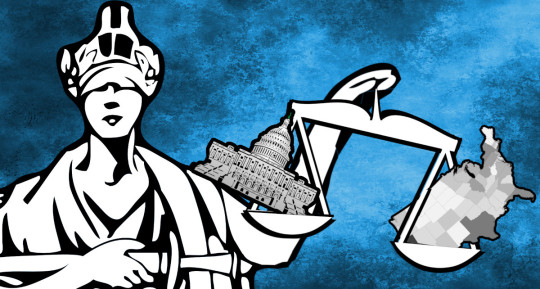
In 2021, Apple updated its mobile OS so that users could opt out of app tracking with one click. More than 96% opted out, costing Facebook $10b in one year. The kicker? Even if you opted out, Apple continued to spy on you, just as invasively as Facebook had, as part of its competing targeted ad product:
https://pluralistic.net/2022/11/14/luxury-surveillance/#liar-liar
If you’d like an essay-formatted version of this post to read or share, here’s a link to it on pluralistic.net, my surveillance-free, ad-free, tracker-free blog:
https://pluralistic.net/2023/02/23/state-of-play/#patchwork
The fact that Apple — a company that has blanketed the world with anti-surveillance billboards — engaged in deceptive, pervasive surveillance reveals the bankruptcy of “letting the market decide” what privacy protections you should have.
When you walk into a grocery store, you know that the FDA is on the job, making sure that the food you buy doesn’t kill you — but no one stops the grocery store from tracking literally every step you take, every eye movement you make (no, really!) and selling that to all comers:
https://themarkup.org/privacy/2023/02/16/forget-milk-and-eggs-supermarkets-are-having-a-fire-sale-on-data-about-you
America’s decision to let the private sector self-regulate commercial surveillance is a grotesque failure of duty on the part of Congress, which has consistently failed to pass comprehensive privacy legislation. There are lots of reasons for this, but the most important is that American cops and spies are totally reliant on commercial surveillance brokers, and they fight like hell against any privacy legislation:
https://pluralistic.net/2021/04/13/public-interest-pharma/#axciom
The private sector’s unregulated privacy free-for-all means that cops don’t need to get warrants to spy on you — they can just buy the data on the open market for pennies:
https://pluralistic.net/2020/08/18/fifth-pig/#ppp
The last Congressional session almost passed a halfway decent (but still deeply flawed) federal privacy law, but then they didn’t. Basically, Congress only passes laws that can be sandwiched into 1,000-page must-pass bills and most of the good stuff that gets through only does so because some bought-and-paid-for Congressjerks are too busy complaining about “woke librarians” to read the bills before they come up for a vote.
The catastrophic failure to protect Americans’ privacy has sent human rights groups hunting for other means to accomplish the same end. On the federal level, there’s the newly reinvigorated FTC, under the visionary, muscular leadership of Lina Khan, the best Commission chair in a generation. She’s hard at work on rules to limit commercial surveillance:
https://pluralistic.net/2022/08/12/regulatory-uncapture/#conscious-uncoupling
But FTC regs take time to pass, and it can be hard for ordinary individuals to trigger their enforcement, which might leave you at the mercy of your local officials when your privacy is invaded. What we really need is a privacy law with a “private right of action” — the right to go to court on your own:
https://www.eff.org/deeplinks/2019/01/you-should-have-right-sue-companies-violate-your-privacy
The business lobby hates private right of action, and they trick low-information voters into opposing them with lies about “ambulance chasers” who sue innocent fast-food outlets for millions because they serve coffee that’s too hot:
https://pluralistic.net/2022/06/12/hot-coffee/#mcgeico
With Congress deadlocked and privacy harms spiraling, pro-privacy groups have turned to the states, as Alfred Ng writes for Politico:
https://www.politico.com/news/2023/02/22/statehouses-privacy-law-cybersecurity-00083775
The best provisions of the failed federal privacy law have been introduced as state legislation in Massachusetts and Illinois, and there are amendments to Indiana’s existing state privacy law — 16 states in all are working on or have some kind of privacy law. This means businesses must live with the dread “patchwork of laws,” which serves the business lobby right: they must do business in potentially radically different ways in different states, and small missteps could cost them millions, in true fuck-around-and-find-out fashion.
As Ng writes, these laws don’t have to pass in every state. America’s historically contingent, lopsided state lines mean that some states are so populous that whatever rules they pass end up going nationwide (the ACLU’s Kade Crockford uses the example of California Prop 65 warnings showing up on canned goods in NY).
As Congress descends further into self-parody, the temptation to treat the federal government as damage and route around it only mounts. It’s a powerful, but imperfect strategy. On the negative side, it takes a lot of resources to introduce legislation into multiple states, and to win legislative fights in each.
Think of the incredible fuckery that the coalition of Apple, John Deere, Wahl, and other monopolists got up to defeat dozens of state Right to Repair laws, even snatching victory from the jaws of defeat in New York state, neutering the incredible state electronics repair law before it reached the governor’s desk:
https://www.techdirt.com/2023/02/17/more-details-on-how-tech-lobbyists-lobotomized-nys-right-to-repair-law-with-governor-kathy-hochuls-help/
Indeed, the business lobby loves lobbying statehouses, treating them as the Feds’ farm-leagues, filled with naive, easily hoodwinked rubes. Organizations like ALEC use their endless corporate funding to get state legislation that piles farce upon tragedy, like the laws banning municipal fiber networks:
https://pluralistic.net/2022/12/15/useful-idiotsuseful-idiots/#unrequited-love
The right has always had hooks in state legislatures, but they really opened up the sluice gates in the runup to the 2010 census, when a GOP strategist called Thomas Hofeller started pitching Republican operatives on a plan called REDMAP, to capture state legislatures in time for a post-2010 census mass-redistricting that would neutralize the votes of Black and brown people and deliver permanent rule by an openly white nationalist Republican party that could lose every popular vote and still hold power.
Of course, that’s not how they talked about it in public. Though the racial dimension of GOP gerrymandering were visible to anyone on the ground, Hofeller maintained a veneer of plausible deniability on the new REDMAP districts, leaving the racist intent of GOP redistricting as a he-said/she-said matter of conjecture:
https://www.klfy.com/national/late-gop-redistricting-gurus-files-hint-at-partisan-motives/
That is, until 2018, when Satan summoned Hofeller back to hell, leaving his personal effects in the hands of his estranged anarchist daughter, Stephanie, who dumped all her old man’s files online, including the powerpoint slides he delivered to his GOP colleagues where he basically said, “Hey kids, let’s do an illegal racism!”
https://www.vice.com/en/article/pked4v/the-anarchist-daughter-of-the-gops-gerrymandering-mastermind-just-dumped-all-his-maps-and-files-on-google-drive
Sometimes, laws that turn on intent are difficult to enforce because they require knowledge of the accused’s state of mind. But there are so many would-be supervillains who just can’t stop themselves from monologing, and worse, putting it in writing.
As bad as state politics can be, they’re still winnable battlefields. Last year saw a profound win on Right to Repair in Colorado, where a wheelchair repair bill, HB22–1031, made history:
https://www.eff.org/deeplinks/2022/06/when-drm-comes-your-wheelchair
That win helped inspire Rebecca Giblin and I when we were writing Chokepoint Capitalism, our book about how Big Tech and Big Content rip off creative workers, and what to do about it.
https://chokepointcapitalism.com
Many readers have noted that the first half of the book — where were unpack the scams of streaming, news advertising, ebooks and audiobooks, and other creative fields — is incredibly enraging.
But if you find yourself struggling to concentrate on the book because of a persistent, high-pitched whining noise that you suspect might be a rage-induced incipient aneurysm, keep reading! The second half of the book is full of detailed, shovel-ready policy proposals to get artists paid, including a state legislative proposal that works from the same playbook as these state privacy laws.
If your creative work entitles you to receive royalties, your contract will typically include the right to audit your royalty statements. If you do audit your royalties, you will often find “discrepancies.” We cite one LA firm that has performed tens of thousands of record contract audits over decades, and in every instance except one, the errors they discovered were in the labels’ favor.
This is a hell of a head-scratcher. I can only assume that some kind of extremely vexing, highly localized probability storm has taken up permanent residence over the Big Three labels’ accounting departments, making life hell for their CPAs, and my heart goes out to them.
Anyway: if you find one of these errors and you tell your label or publisher or studio, “Hey, you stole my money, cough up!” they will pat you on the head and say, “Oh, you artists are adorable but you can’t do math. You’re mistaken, we don’t owe you anything. But because we’re good natured slobs, we’ll offer you, say, half of what you think we owe you, which is good, because you can’t afford to sue us. And all you need to do to get that money is to sign this non-disclosure agreement, meaning you can’t tell anyone else about the money we’re stealing from them.
“Oh, and one more thing: your accountant has to promise never to audit us again.” As Caldwell-Kelly said when we talked about this on Trashfuture, this is like the accused murderer telling the forensics team, “Dig anywhere you’d like in my garden, just not in that corner, I’m very sentimental about it.”
https://trashfuturepodcast.podbean.com/e/amazon-billing-amazon-for-amazon-feat-cory-doctorow-and-rebecca-giblin/
Now, contracts are a matter of state law, and nearly every entertainment industry contract is signed in one of four jurisdictions: NY, CA, TN (Nashville), and WA (games companies and Amazon). If we amended the state laws in one or more of these to say, “NDAs can’t be enforced when they pertain to wage theft arising from omissions or misstatements on royalties,” we could pour money into the pockets of creative workers all over the world.
Yes, the entertainment giants will fight like hell against this, and yes, they have a lot of juice in their state legislatures. But they’re also incredibly greedy and reckless, and prone to such breathtaking and brazen acts of wage theft that they lurch from crisis to crisis, and at each of these crises, there is a space to pass a law to address these very public failings.
For example, in 2022, the Writers Guild of America — one of the best, most principled, most solidaristic and unified unions in Hollywood — wrested $42 million from Netflix, which the company had stolen from its writers:
https://variety.com/2022/film/news/wga-wins-42-million-arbitration-netflix-1235333822/
Netflix isn’t alone in these massive acts of wage theft, and this is certainly not the only way Netflix is stealing from creative workers. There’s never just one ant: if Netflix cooked the books for writers, they’re definitely cooking it for other workers. That means there will be more scandals, and when they break, we can demand more than a bandaid fix for one crime — we can demand modest-but-critical legislative action to fix contracts and prevent this kind of wage-theft in the future.
The state legislatures aren’t an intrinsically better battlefield for just fights, but they are an alternative to Congress, and there is space to make things happen in just some of the 50 state houses that can ripple out over the whole country — for good and bad.
[Image ID: Blind justice, holding aloft a set of unbalanced scales; in the lower scale is a map of the USA showing the state lines; in the higher scale rests the capitol building.]
#pluralistic#states rights#laboratories of democracy#privacy#gdpr#federalism#contract law#chokepoint capitalism#wage theft#redmap
66 notes
·
View notes
Text
I hate you advertisements I hate you LED billboards I hate you mobile ads with small Xs I hate you ads on buildings and busses I hate you ads before after and during videos I hate you sponsored content advertisement I hate you rented ad space I hate you commercials I hate you 5 minutes of the same few radio ads I hate you marketability and the increasing encroachment of advertisements in public and digital spaces
#currently on a road trip and im having feelings about being surrounded by ads#we keep having to turn the radio off because its 5 straight minutes of ad breaks#theres so many billboards all clamouring for your attention span and gaze that being in the mountains was sobering#everything is commodified and its sad and im tired of my life veing reduced to how much money i can spend/earn
63 notes
·
View notes
Text

DAMN THAT APP!
Forget paper flyers and static billboards – the business world has gone mobile, and small businesses are riding the wave like never before. In 2023, over 3.5 billion smartphone users globally spend an average of 4 hours per day glued to their screens, and a whopping 70% of all digital media consumption happens on mobile devices. This isn't just a fad; it's a fundamental shift in how customers discover, interact with, and transact with businesses.
And guess what? Small businesses are no longer playing catch-up. A recent App Annie report revealed that 73% of small and medium-sized businesses (SMBs) now have a mobile app.
With such a high demand, software development for businesses can be the most reliable way to make money. Although they do not contribute to the direct sale of goods and services, they have a significant impact on the operations of all types of businesses. A workforce adapting to the use of technology will undoubtedly look for programs to help systematize their daily tasks. Every part and activity of a business can be improved in terms of ease and efficiency with the help of software.
Inspired by these big fish in the market, you have an entrepreneurial vision to start a mobile app development company for small businesses. But starting an app development business requires dedication, diligence and in-depth knowledge of the industry and your target market. With the right talent, team and strategy, you can build a successful business that delivers cutting-edge applications to customers.
The mobile app gold rush is far from over. The global app market is projected to reach a staggering $268 billion by 2027, with the SMB segment growing at an even faster pace. But before you jump headfirst into development, remember – the competition is fierce.
Task at Hand:
Develop a business plan that includes
· STP analysis
· Competitive landscape
· Unique value proposition
· Launch and marketing strategies
· Pricing model
Estimated capital in 5 years
Deliverables:
· A ppt of not more than 10 slides
· A report of not more than 12 pages
· Any extra deliverables or creatives that you see fit ( i.e., Posters, Advertisements etc)
Submission Time: 2:15 pm
2 notes
·
View notes
Text
About Yang Media
Các dịch vụ Marketing và Truyền thông đa dạng
Là một công ty truyền thông uy tín và chuyên nghiệp, Yang Media mang đến cho khách hàng các dịch vụ đa dạng bao gồm:
Tư vấn xây dựng chiến lược Marketing: Đội ngũ chuyên gia của Yang Media tiến hành nghiên cứu và đề xuất chiến lược Marketing phù hợp với đặc điểm cụ thể của sản phẩm/dịch vụ và đối tượng khách hàng của doanh nghiệp.
Digital Marketing – Marketing online: Bao gồm SEO, SEM, social media marketing, email marketing, mobile marketing… nhằm đưa thông điệp sản phẩm đến đúng đối tượng khách hàng tiềm năng.
Quảng cáo truyền thông: Được thực hiện thông qua các kênh như TV, báo online, tạp chí, radio, sự kiện, quảng cáo LCD, billboard, cửa thang máy, và cho thuê vị trí đặt standee chung cư căn hộ… nhằm giúp thương hiệu dễ dàng tiếp cận đối tượng khách hàng mục tiêu.
Tổ chức sự kiện: Đảm nhận vai trò trong việc tổ chức ra mắt sản phẩm, sự kiện thương hiệu, hội nghị khách hàng… để quảng bá hình ảnh doanh nghiệp đến công chúng và khách hàng.
Sáng tạo nội dung quảng cáo, thiết kế đồ họa, sản xuất video quảng cáo: Hỗ trợ doanh nghiệp trong việc tạo ra nội dung sáng tạo, thiết kế đồ họa, và sản xuất video quảng cáo chất lượng cao.
Với đa dạng các dịch vụ và giải pháp chuyên nghiệp về Truyền thông và Marketing, Yang Media cam kết đồng hành cùng doanh nghiệp xây dựng và thực hiện các chiến dịch quảng bá thương hiệu và bán hàng một cách hiệu quả.
2 notes
·
View notes
Text
Become a Digital Marketing Pro: Learn the Basics NOW!
What is Digital Marketing?
Digital Marketing refers to the marketing of products and services of a company or business through digital channels such as search engines, websites, email, social media, mobile apps, etc. It involves the use of electronic devices and the internet. Digital marketing is often referred to as online marketing, internet marketing or web marketing.
Digital marketing mainly comprises Search Engine Optimization (SEO), Social Media Optimization (SMO), and Search Engine Marketing (SEM). We can say that it can be divided into three parts SEO, SMO, and SEM. However, Email Marketing and Affiliate Marketing have also become important components of digital marketing over the past few years. So, in digital marketing, we mainly deal with the following components:
SEO
SMO
SEM
Email Marketing
Affiliate Marketing
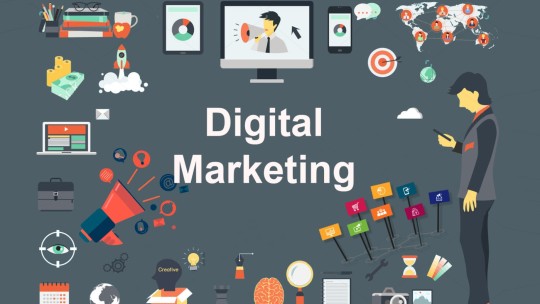
Why choose Digital Marketing?
Non-Digital Marketing, which is the traditional means of marketing, includes the usage of physical means of marketing. These are generally in the form of physical prints such as posters, flyers, newspaper advertisements, and billboards. Even at the first glance, it is quite apparent why almost every business is choosing to get into Digital Marketing.
The primary and the most fundamental reasoning for this is the amount of reach that is possible with it. There are smart devices everywhere, from televisions, laptops, computers, and tablets to smartphones. Even cars have smart systems enabled in them where you can access the Internet. All of these facilities present a blank canvas for advertising your brand.
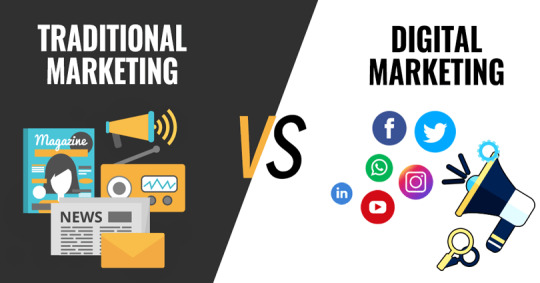
How does Digital Marketing work?
There are two ways in which Digital Marketing is implemented by brands and businesses:
B2C (Business to Customer)
B2B (Business to Business)
B2C (Business to Customer):
When a brand or a company has to sell a product or service to individual customers. In fact, 95 percent of the time, the ads and marketing that you see online are examples of B2C campaigns, e.g., an ad for a candy bar, a promotional video for a safety razor, or a movie trailer. All of these marketing efforts are targeting individual consumers and not organizations.
B2B (Business to Business):
B2B is conducted for very specific products. You wouldn’t generally see B2B products being advertised on platforms with traffic from the everyday crowd. These marketing campaigns are low profile, professional, and in most cases, marketed directly (or pitched) to the client. This client can be a small business or a corporate giant. We can take heavy-duty cooking machinery used in big fast-food restaurants as an example. What would be the point of running a TV ad for an industry-level chimney? None. This sort of marketing is done through B2B-specialized salesmen who use custom-made marketing material, PowerPoint presentations, and word of mouth to pitch their product.

Not surprisingly, billions of marketing dollars spent on traditional channels is already starting to shift to digital marketing campaigns and this will continue to increase as the Web matures.
#digital marketing#digital marketing from basics#Introduction to digital marketing#how to learn digital marketing#what is digital marketing#online marketing#affiliate marketing#Basics of digital marketing#Why choose digital marketing#How does digital marketing work#learn digital marketing#Email marketing#search engine optimisation#seo#seo marketing
13 notes
·
View notes
Text
Custom Vehicle Wraps With 3D Effects
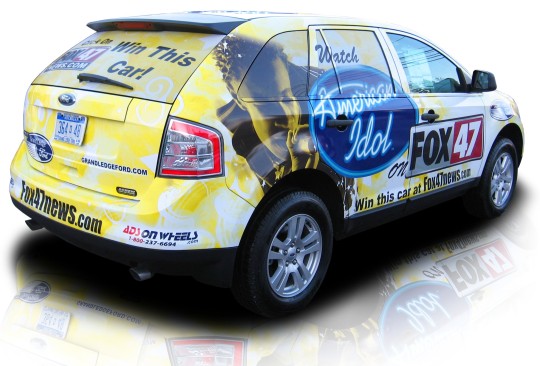
Utilize your vehicle as a mobile billboard and gain more impressions for less money than with traditional marketing strategies. Full vehicle wraps also enable you to utilize every surface of the car or truck for an attractive design that stands out.
vehicle branding near me should carefully prepare the paint surface of your vehicle in order to ensure there are no rust spots or dents underneath the wrap, and to avoid rushed painting jobs which look unprofessional and potentially damage its integrity.
3D graphics
Vehicle wraps can create lasting impressions and be an effective marketing investment for local businesses of any size - be they solar panel suppliers, restaurants, pet care specialists or hotels. At Caliber Signs and Imaging we have done vehicle wrappings for solar panel suppliers, restaurants, pet care experts hotels among others - so whether your goal is brand recognition or brand awareness we have your solution!
There is an assortment of colors from which to choose, but it is essential that the design can be read at high speeds on the road. Sans serif fonts may make reading your message easier.
Roland DG TrueVIS series printers and GR2 series vinyl cutters from Roland DG offer reliable digital large format printing that delivers premium graphics for vehicle wraps, providing color accuracy, media versatility and productivity benefits that professionals require in vehicle graphics work.
3D logos
An effective logo conveys who and what your organization stands for to the world, prompts people to recall your product, and helps potential customers evaluate if your offering fits with them. Logos do this through colors, shapes and other design elements.
Car wraps are a cost-effective and eye-catching way to promote your business and create mobile billboards, turning vehicles into moving billboards that reach millions every day. In fact, research indicates that just one vehicle with wrap advertising could reach up to 80,000 people daily! Don't overlook this type of advertisement for making an impactful statement about who you are!
A wrap can be as complex or straightforward as desired, as long as it serves its function and can easily be read. 3D effects should be used sparingly so as not to detract from its message, and design elements should be easily scaled for different sizes, applications and environments - plus the capability of being printed on different types of media in different colors and formats.
3D text
Vehicle wraps are an efficient way for companies and organizations to promote their services or products. A vehicle wrap can transform an assortment of trucks into an organized fleet or serve as a mobile billboard for local businesses - unlike traditional print advertisements which typically yield few impressions for their dollar spent.
Use the 3D Text plugin to add a 3D effect to any text on your stage. While its default settings should work just fine, experiment with its various contour options until you achieve exactly the look you desire.
3D Text offers several customizable bevel controls to add characteristic edge styles, as well as repeat its width and angle for greater visual effects. Furthermore, different materials can be applied to face, back, sides and bevel areas of text for even more flexibility when creating visuals effects.
3D shapes
Custom vehicle wraps can add a memorable and eye-catching visual to any car, from rock bands and celebrities who don't shy away from attention to those seeking a personalized tribal graphic effect. The process involves applying high-performance cast vinyl directly to a car's paint surface before laminating this film to protect the design against abrasion.
Experts use special measures to create vehicle wraps. First they measure the hood, bumpers, and fenders before adding three inches of extra material (bleed) so that their prints will fit seamlessly during installation.
Make your wrapping business stand out by offering special effects like metallics and matte finishes, adding textures such as carbon fiber, honeycomb, crocodile skin or emulsion - these techniques will ensure customers' vehicles stand out.
2 notes
·
View notes
Text

2024 Prospects for Out-of-Home (OOH) Advertising
Out-of-home (OOH) advertising is a potent tool for engaging customers outside of the digital domain in the ever-changing world of advertising. It's critical to take into account the variety of chances that OOH advertising—which goes beyond conventional billboards and signs—offers as we approach 2024.
Whether it's through the creative use of mobile billboards, subway station displays, or gas station screens, out-of-home advertising blends in perfectly with our environment. These platforms enable marketers to interact with customers offline, enhancing their online initiatives.
Placement Strategically and Widely
OOH advertising reaches audiences in cities like New York, Los Angeles, Chicago, Washington, DC, Miami, Charlotte, North Carolina, and all over California. It also enables smart placement and wide reach. OOH advertising is a flexible alternative for brands since it targets people where they live, work, and commute, ensuring exposure to a wide range of demographics.
Reduced Cost-Effectiveness and Competition
OOH advertising is less competitive and provides more affordable options than digital media. For example, mobile billboards are affordable and offer positional flexibility, making them available to enterprises of all sizes.
Adaptability and Digital Integration
OOH advertising, which includes mobile billboards, is flexible enough to change with the needs of shifting customer preferences. Furthermore, these platforms easily mesh with online marketing initiatives, establishing a consistent brand presence across many media.
Elevated Awareness and Innovative Possibilities
OOH advertising guarantees excellent visibility and makes a lasting impact on viewers. In particular, mobile billboards draw attention and let businesses try out innovative concepts, which promotes brand awareness and interaction.
Seizing the Chances
It is imperative for brands to embrace the distinct benefits of out-of-home (OOH) advertising as we traverse the advertising landscape. OOH advertising provides chances to meaningfully engage with customers through creative utilization of physical venues or mobile billboards.
To sum up, OOH advertising is a very attractive option for companies looking to improve their marketing tactics. OOH advertising provides a flexible and efficient means of engaging customers, from creative potential to strategic placement. Together, let's take advantage of these chances and investigate the options that present themselves.
0 notes
Text

THE POWER OF DIGITAL MOBILE BILLBOARDS
Digital mobile billboards are an adaptable and economical means for companies in big cities like Miami, Washington, DC, New York, Los Angeles, and Chicago to reach a variety of audiences. For local businesses like real estate firms, these billboards are perfect because they are visible to everyone when mounted on trucks or buses. Businesses may promote a variety of products or seasonal offers without breaking the bank thanks to their easy-to-change ads.
For companies in Florida, Charlotte, North Carolina, and California who are interested in using digital mobile billboards, Cantmiss.US is a dependable service provider. Unlike static billboards, these billboards are unique in that they move, which makes them distinctive. Additionally, they are reasonably priced, enabling companies of many kinds to utilize them. Moreover, companies can maximize the effectiveness of their advertising campaigns by customizing their messaging for particular audiences or periods of time because of their dynamic nature.
In conclusion, companies can effectively raise their presence in big cities without going over budget by using digital mobile billboards. Their versatility, cost, and capacity to establish a strong, unforgettable connection with customers make them an invaluable resource for any enterprise seeking to broaden its customer base.
0 notes
Text
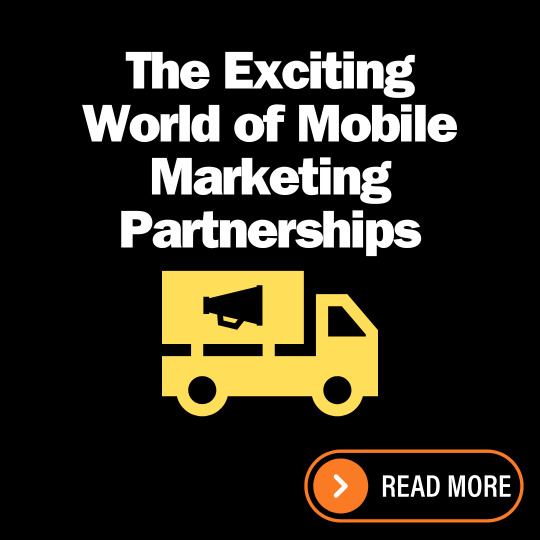
In today's ever-changing corporate environment, the pursuit of innovation frequently results in unanticipated alliances that pave the way to new opportunities. As we head into the unfolding adventure of 2024, businesses looking to explore the possibilities of customer involvement in the digital world may find that working with a mobile marketing ally is an exciting voyage.
Exposing Novel Frontiers
Imagine embarking on a journey of exploration and navigating the ever-shifting tides of technological advancement and consumer behavior. Discovering unexplored realms of creativity and innovation is the mission of a mobile marketing partnership, which goes beyond simply establishing a connection with target audiences. The voyage becomes an exciting exploration of new territories when you have the perfect company by your side.
Exploring Limitless Potential
From the bustling streets of New York to the sprawling landscapes of Los Angeles, the world of mobile marketing is a vast playground of possibilities. With a trusted partner guiding your expedition, you can venture into unexplored territories, harnessing the power of mobile technology to connect with audiences in meaningful ways. Whether it's creating immersive experiences or sparking conversations in Chicago or Washington, DC, every step of the journey is an opportunity for discovery.
Seizing the Moment with Strategic Insights
In the constantly evolving field of digital innovation, knowledge serves as your compass. Working with a mobile marketing partner gives you access to knowledge and insights that help you see the future clearly. Strategic insights enable you to navigate the complexity of technology landscapes and comprehend the subtleties of customer behavior, enabling you to make well-informed decisions and steer clear of obstacles and toward success.
Fostering Collaborative Expeditions
Success in the realm of mobile marketing isn't just about technology; it's about the journey of exploration and discovery. By forging a partnership with a mobile marketing agency in Miami or Charlotte, North Carolina, you embark on a collaborative expedition with a team of explorers who share your passion for innovation. Together, you can embark on bold adventures, experiment with new ideas, and overcome challenges with resilience and creativity.
Accept the Journey
The adventure of mobile marketing collaborations entices us to explore the unexplored regions of 2024. It's more than simply a trip; it's an exciting adventure full of new experiences and limitless opportunities. So grab the opportunity, embrace the spirit of adventure, and set out on this thrilling journey of invention and discovery.
0 notes
Text
Unlocking the Transformative Potential: Mobilizing Billboards to Revolutionize Advertising
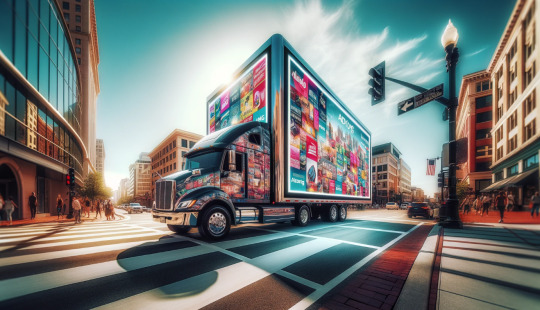
Have you ever considered how well-known brands manage to draw in customers wherever they may be? Mobile billboards are a small device they employ as a covert weapon in their toolbox. These gangsters migrate around crowded cities including Chicago, Washington, DC, Los Angeles, California, New York City, Miami, Florida, and Charlotte, North Carolina.
These trucks offer a distinct atmosphere and a novel form of out-of-home advertising, providing businesses with an innovative approach to reaching prospective clients. Their mobility allows them to move to locations where the action is. These enormous moving billboards travel the streets, focusing on places where people congregate.
They merge in the background noiselessly, selectively focusing on the appropriate audience, much like a chameleon. Regardless of the time of day—rush hour, holiday, or just regular—these trucks are undoubtedly creating a big impression and drawing attention.
Since mobile billboards have become more common, entrepreneurs who want to have a visual presence for their goods may now strategically arrange and schedule the appearance of their ads. Furthermore, companies are able to accurately monitor the effectiveness of their efforts.
They can adjust their approach and maximize their investment because all the information—including engagement levels and impressions—is available.
These movable billboards are inexpensive, which is one of their greatest features. It wouldn't cost the earth to advertise this way. For what reason? Installation or production fees are not required. Nothing like that would concern you.
Not to mention, when you catch a peek of these mobile billboards, it's hard to miss them because they're not just large but also noticeable, bright, and eye-catching. They offer engaging animations, visually appealing graphics, and even interactive features. This type of advertisement undoubtedly makes an impact on viewers.
In summary, mobile billboards are undoubtedly a successful form of advertising in the present era. In addition to versatility, they provide dynamic personalization that is one-of-a-kind, and most significantly, it is affordable.
Going forward, whether you walk or even just stroll around the city streets, keep a look out for these billboards that move; they might just be displaying something you would be interested in!
0 notes
Text
The constant stream of ads is insane. Even my high school foyer isn’t safe; on the speakers they play hours of spotify free, leading to hours and hours of nothing but ads, with only a few seconds of actual music playing in between. I cannot study or have a snack or read or even listen to my own music without being bombarded with ads, blaring from speakers near the ceiling.
I go out to take the bus? It’s just one big moving billboard. I wanna take the train? Haha no peace and quiet for you, someone’s gonna be blasting ads and music, while the walls of the train car are papered with posters.
You want some fresh fruit from the market?? Nope, no safety there, there will be stickers for local car dealerships or supermarkets all over them.
You want to learn a new language? You want to use an app in order to not have to take classes in person? Nah, at the end of every lesson there’s gonna be a 30 to 60 second ad. Sometimes even in the beginning of the lesson, too!
You want to ask a question but can’t get an answer in person, so you look it up on an internet browser? Yeah haha the first two pages are just going to be sponsored ads, product placements, sites that look normal but actually redirect you to a paying porn site, and sites that are so riddled with ads themselves; it’s like the advertisements are maggots eating the site’s decaying corpse.
You have a telephone to contact your family? You’ll be getting an average of 2 spam calls per day, advertising everything from life insurance to mobile data plans. Sometimes they’ll even call you as many as 16 times in one day. (This is a personal experience).
You want to eat out because you don’t have the time to make yourself a quick meal? All the napkins will just be slightly soft, pliable ads. Maybe you’ll even be given a card to visit another place you can buy services of goods!
2 notes
·
View notes